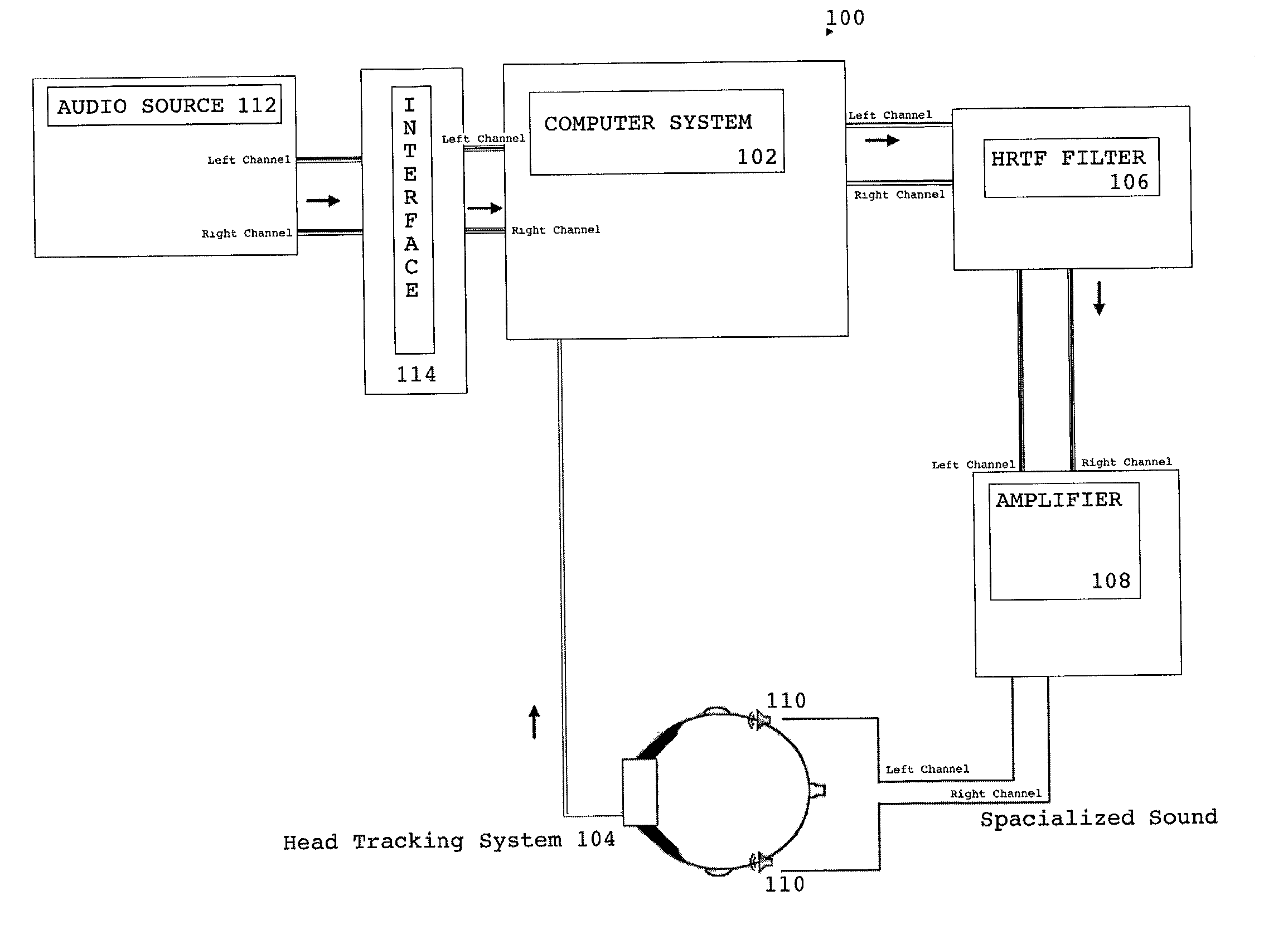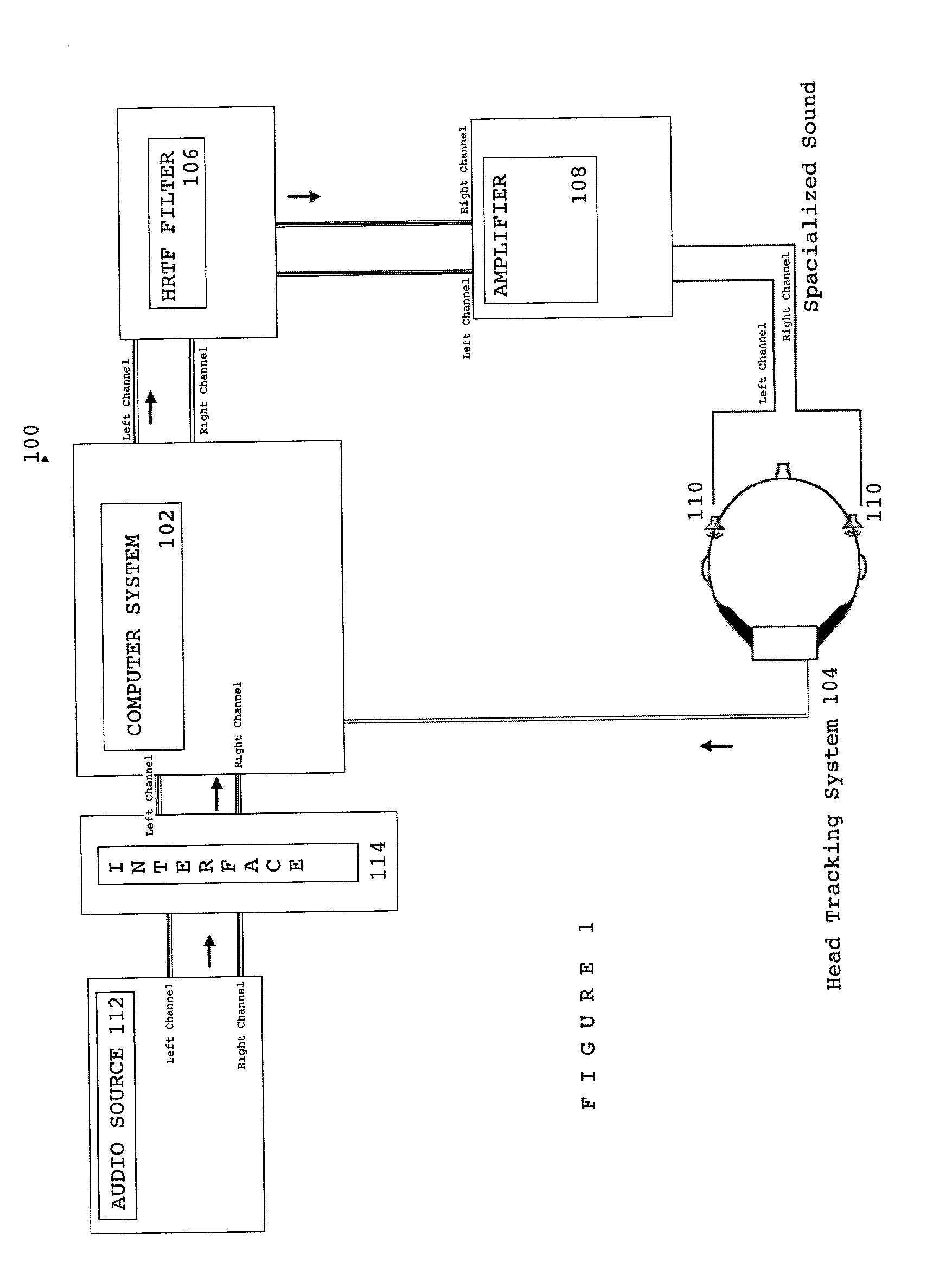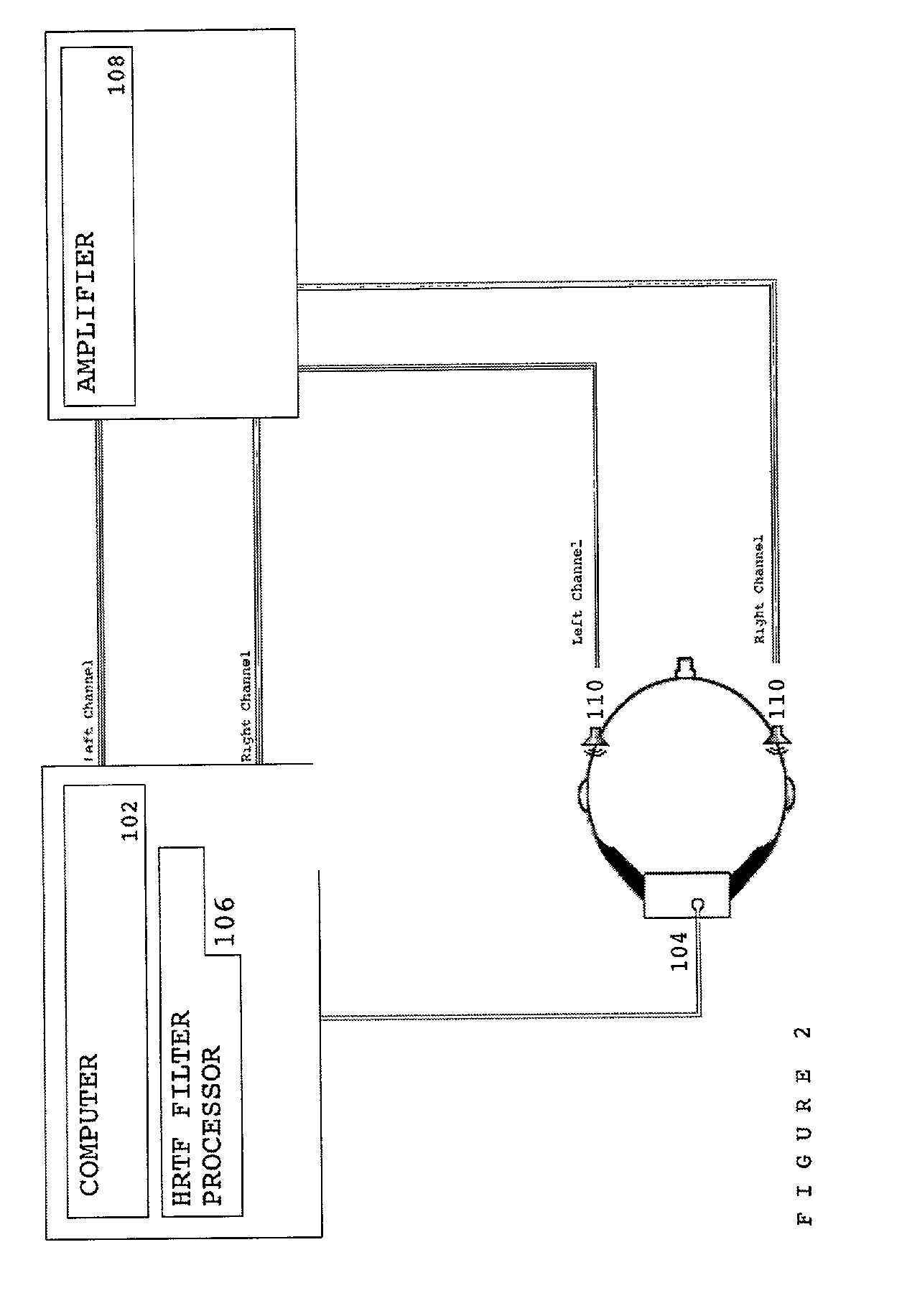Method and apparatus for producing spatialized audio signals
a spatialized audio and signal technology, applied in the field of audio systems, can solve the problems of increasing the awareness and desire for quality audio content, certain limitations on their use, and the cost of exact environmental modeling is extraordinarily high, and achieve the effect of audible spatial filtering
- Summary
- Abstract
- Description
- Claims
- Application Information
AI Technical Summary
Benefits of technology
Problems solved by technology
Method used
Image
Examples
Embodiment Construction
[0024]FIG. 1 shows an exemplary audio system configuration of the present invention as generally indicated at 100. The audio system 100 includes a computer system 102 for controlling various components of system 100. Audio signals from an audio source, such as for example, an audio server 112 are received by the computer system 102 for further processing. The computer system 102 is an “off the shelf” commercially available system and could be selected from any of the following systems, which have been used to implement this invention: the Crystal River Engineering Acoustetron II; the Hewlett Packard Omnibook with a Crystal PnP audio system and RSC 3d audio software; an Apple Cube with USB stereo output and 3D audio software.
[0025]A head tracking system 104 is mounted on a frame to which speakers 110 are attached close to the temple of a user's head. The frame is mounted on the user's head and moves as the head moves. Any conventional means for attaching the speakers to the frame may...
PUM
 Login to View More
Login to View More Abstract
Description
Claims
Application Information
 Login to View More
Login to View More - R&D
- Intellectual Property
- Life Sciences
- Materials
- Tech Scout
- Unparalleled Data Quality
- Higher Quality Content
- 60% Fewer Hallucinations
Browse by: Latest US Patents, China's latest patents, Technical Efficacy Thesaurus, Application Domain, Technology Topic, Popular Technical Reports.
© 2025 PatSnap. All rights reserved.Legal|Privacy policy|Modern Slavery Act Transparency Statement|Sitemap|About US| Contact US: help@patsnap.com



